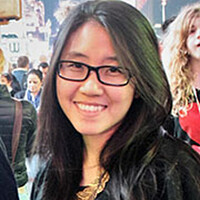Google unveils Noto: One universal font to rule them all?
Loading...
When your computer doesn’t recognize a language, a blank box is displayed on the screen – commonly known as a tofu.
Seeing a tofu constantly is frustrating for those who find that they cannot share texts in their original scripts. Ali Eteraz, a Pakistani-American writer, wrote in a Medium post in 2013 about how nastaliq, a script from Urdu, which is a language spoken in Pakistan and India, is not supported in digital devices, so Urdu speakers must resort to pasting images of words to share texts, using other scripts, or simply writing with Western letters.
to communicate maybe romantic (or it can make you feel like a second class digital citizen), but it is not practical,” he wrote.
On Thursday, Google announced their solution for the problem: Noto, named literally for “no more tofu,” a font family that covers more than 800 languages and 100 writing scripts. The project, five years in the making, is one of the biggest typography projects in recent times. It will be open source and free for download.
“Our goal for Noto has been to create fonts for our devices, but we’re also very interested in ,” Bob Jung, director of internationalization for Google said in a press release. “When it comes to some of these lesser used languages, or even the purely academic or dead languages, we think it’s really important to preserve them. Without the digital capability of Noto, it’s much more difficult to preserve that cultural resource.”
Noto, a product of collaboration between Google and font company Monotype, aims to “enable global communications across borders, languages, cultures and time periods,” as stated in the press release. While some may be wary of Google’s motives – the project arguably plays right into the giant company’s ambitions for global expansion – the goal is fitting to a time when are using the Internet. For global minorities to be welcomed to the Internet with a familiar language can be vital in encouraging accessibility.
“I’m hugely excited about this because Noto is massive and it’s really an amazing public service,” Finn Bunton, assistant professor at New York University, tells ���Ǵ��� in a phone interview. “Companies have incentives for doing this, but this is a pretty amazing thing to be done by Google.”
Professor Bunton says Noto is monumental because until now, text has been transmitted and displayed in screens only through limited codes, which means some fonts don't even offer accented characters.
Since the 1990s, the Unicode Consortium, a nonprofit that sets standard code points for symbols, characters, and even emojis on the Internet, has worked to create unique identifiers for every glyph in written languages.
“But that didn’t mean you would be able to translate that into something that you could rely on to look good, be readable and work appropriately across a huge variety of platforms,” Bunton explains. “This is what Noto has done which is so amazing.… They’ve made a consistent library where all the pieces are going to be visually harmonious and easy to read.”
Figuring out the unique codes for different languages can be tough. As reported by NPR in 2014, Unicode ran into trouble when they.
“You’d get this ,” Jung told WIRED in an interview. “That was always the complaint we got – fonts just don’t look good when you mix languages.”
Monotype and Google worked with of the language or experts in typography to refine the product, including a Buddhist monastery who critiqued the font and made adjustments for the Tibetan script.
For some languages, this may be the first time the script has a digital presence, let alone a dedicated display font.
"That in particular is something that many different language communities could not afford to do on their own,” Monotype linguistic typographer Kamal Mansour said in the press release. “Google has been the benefactor in funding this work, and in many cases, we’ve produced the first font ever to serve a particular language community. So to me, the aim is to serve that human community that would otherwise be deprived of the ability to have a digital heritage.”




